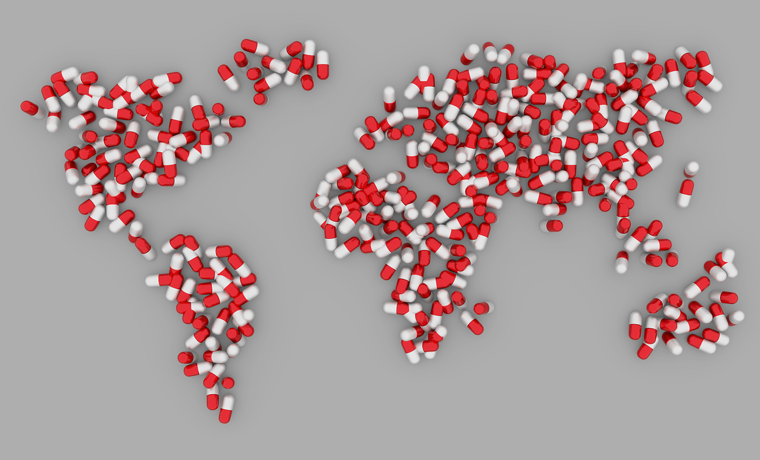Drug shortages in the United States have begun. We don’t have a medication for treating coronavirus (and we might not have a vaccine for some time), but supply chain issues in the United States are making it hard for hospitals and patients to get their hands on diabetes and asthma medications patients need for chronic health issues.
Already, it’s hard for people to get their hands on some prescription meds, and the problem may get worse before it eases up. But exactly how bad it will get, and for how long, is difficult to forecast.
The problem with America’s drug supply comes down to three factors:
- Production of generic medication is largely done abroad.
- The raw ingredients for most of our drugs come from just a few places.
- Information about sourcing is spotty and difficult to parse.
So not only is drug sourcing and production centralized and outsourced, but we also have very little real data about the drug supply.
On both sides of the America’s partisan divide, there’s a consensus that country’s dependence on health products produced abroad has become a huge problem since the pandemic began.
“Long term, we have to figure out why we wound up in this situation where we don’t have the manufacturing capacity in this country,” New York Governor Andrew Cuomo, who’s become a leader in the Democratic response to COVID-19, said about the medication sourcing problem.
“Never again should we rely on the rest of the world for our essential medicines and countermeasures,” said trade adviser Peter Navarro during a White House press briefing.
Where American drugs actually come from
A statistic has been floating around during the pandemic, and it’s not exactly right. The statistic: 80 percent of America’s drug supply comes from China. But before we can get to the root of our supply chain problem, we have to acknowledge the problems with that statistic. As Reason reported earlier this month, this stat originated with a Government Accountability Office report from 2016, which said:
Much of the U.S. drug supply is manufactured overseas. FDA estimates that nearly 40 percent of finished drugs and approximately 80 percent of active pharmaceutical ingredients (API) are manufactured in registered establishments in more than 150 countries.
It’s hard to know exactly where the active pharmaceutical ingredients (APIs) used in our drugs come from. In an October report, the FDA said it does “not currently know whether API manufacturing facilities are actually producing the drug, or in what volume.” So, since we don’t know where APIs become the drugs we consume here, it’s impossible to know “what portion of U.S. drug consumption is dependent on APIs from China or India.”
The bottom line is that while 2,000 facilities around the world make drugs prescribed and consumed in the United States, the FDA doesn’t collect enough data for us to know where the active ingredients come from or where they’re produced. We do know that of the 370 medications listed as “essential” by the World Health Organization, companies produce 21 percent in the United States. The rest are produced either in China (15 percent) or somewhere else (64 percent).
Find out if a drug you need is running low
If you’re worried your medication might be in short supply, there are established ways to figure out if your pharmacist will be able to source it. The FDA has been operating a drug-shortage tracker for two decades. You can search the database for your medication and find out if it’s currently in short supply or if the shortage has been resolved. It’s also possible to search by therapeutic category. That way, you can find out if cancer drugs, antibiotics, or psychiatric drugs are in short supply.
In some ways, the shortage database means United States is already prepared to face this problem. Manufacturers are strongly encouraged to report bumps in the supply chain and the sources of their ingredients in order to get problems ironed out quickly.
But since that reporting is largely voluntary, it gets spotty pretty quickly. Then we end up back where we started. Without thorough and accurate information about sourcing, production, and supply chain, it’s hard for hospitals to prepare for the shortages that might come.


You are reporting the comment """ by on